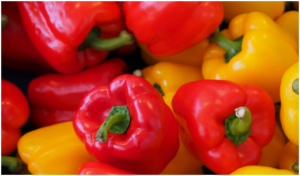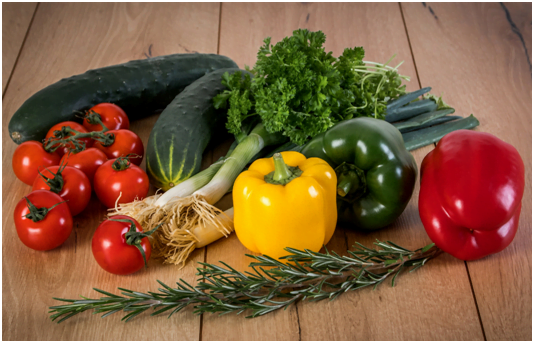Potential markets for fruit and vegetables in Central Asia are the Baltic countries, as well as Ukraine and Belarus. The dynamics of recent years shows that the growth of imports from Central Asia to Ukraine is in double digits. Greenhouse vegtable such as tomato and cucumber are important for Ukraine and peppers are a hot niche in a long-term perspective.
These ideas were expressed by Fedir Rybalko, an expert of the agricultural market, during a virtual training on the effective organization of promotion and packaging of fruit and vegetables for export. The event was organized by the USAID Central Asia Competitiveness, Trade and Jobs Activity Project (CTJ).
“When trading with Ukraine and Belarus, Central Asia has a competitive advantage – no customs duties. Besides, Ukrainian consumers are loyal to products from these countries. As income rises, consumption of pepper rises. Tomato and cucumber remain an important market segment. Consumers often go to the retail stores where a wide range of tomatoes is available,” Fedir Rybalko said.
The expert explained the main factors affecting the quality of tomatoes:
- Temperature. A certain temperature should be maintained till tomatoes arrive in the retail network or in the markets.
“The temperature during the two-week storage is important. If it is below 10°C, damage to tomatoes may occur. They are normally stored at a temperature of 10 and 15°C. Storing tomatoes at 20°C and above leads to a deterioration in their quality,” the expert explains.
- Postharvest ripening. This is very important for tomatoes, especially when it comes to long-distance transportation.
- Mechanical damage. Producers, exporters, packers must comply with the technology of preparing goods for export, avoiding mechanical damage. Mechanical damage will lead to defects, and to losses respectively.
- Diseases. Diseases can occur not only during the production process, but also when technological operation protocols and disinfection procedures are violated. The most common tomato diseases are anthracnose, late blight and fusarium.
At the same time, the expert emphasized that there are certain niches (tomato segments) that are growing due to the trend and consumer preferences: smaller size of tomatoes and packaging, cocktail culture of consumption (tomatoes are used as a snack).
“The Dutch came up with the idea of wrapping tomatoes in a glass with a semicircular lid about 15 years ago. In fact, it is an element of the snack culture. Convenient packaging reduces the time of consumption, which attracts buyers and stimulates demand,” the expert noted.
According to the expert, cucumber is to a large extent a crop for the domestic market, but Spain, Turkey, Iran are quite big exporters of cucumbers. The storing capacity of cucumber is low due to the saturation of the tissues with water.
“The optimum temperature for cucumbers is 10-12.5°C. The required humidity is 95%. Fusarium is the most common disease for this culture,” Fedir Rybalko said.

The expert also added that pepper is a fast-growing crop, but rather difficult to grow: “It takes several years to get the necessary experience in the production of this crop. The optimum temperature for storing peppers is 7.5°C. Acceptable humidity is > 95%. The most common diseases are altenaria and gray rot. Sorting lines must be provided with additional soft materials, which, when sorting peppers, reduce the mechanical damage: cuts, pressure.”
The main requirements of export markets:
– Certified by Global GAP, SMETA, GRASP.
– Certified Euro pallets.
– Logger (temperature control sensor in transit).
– Plastic packaging with modified atmosphere.
“Plastic bags are important for cucumbers and peppers. All products in the box should be tied in a plastic bag. It creates a microenvironment that releases carbon dioxide and maintains moisture. This solves the problem of eventual temperature variation” Fedir Rybalko concluded.
The use of the site materials is free if there is a direct and open for search engines hyperlink to a specific publication of the East-Fruit.com website.




